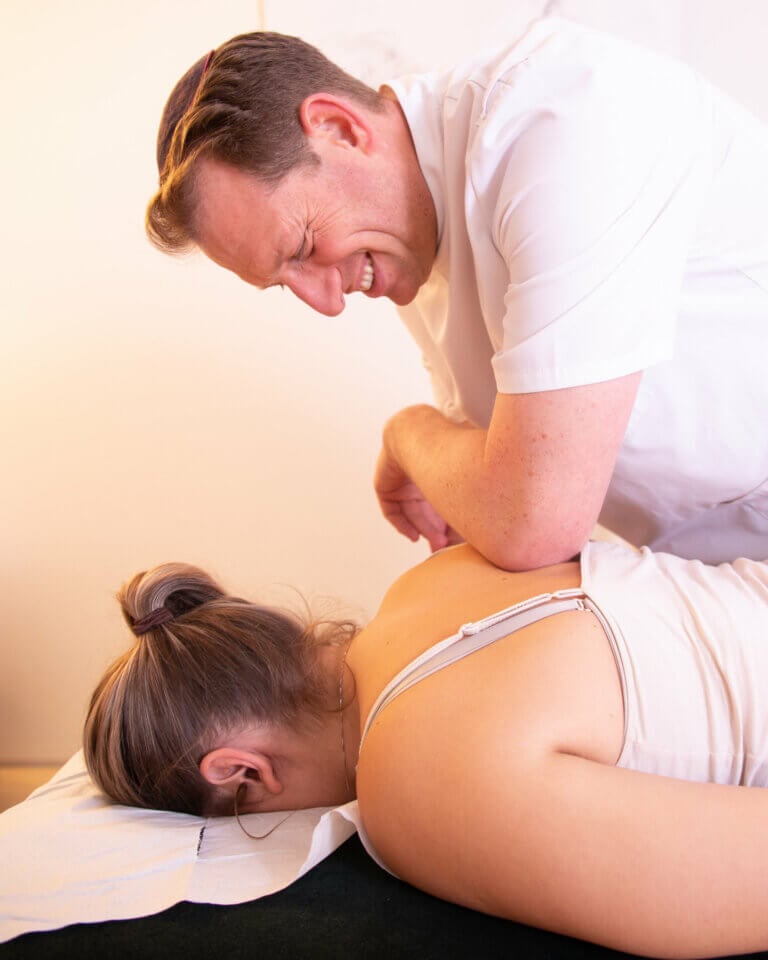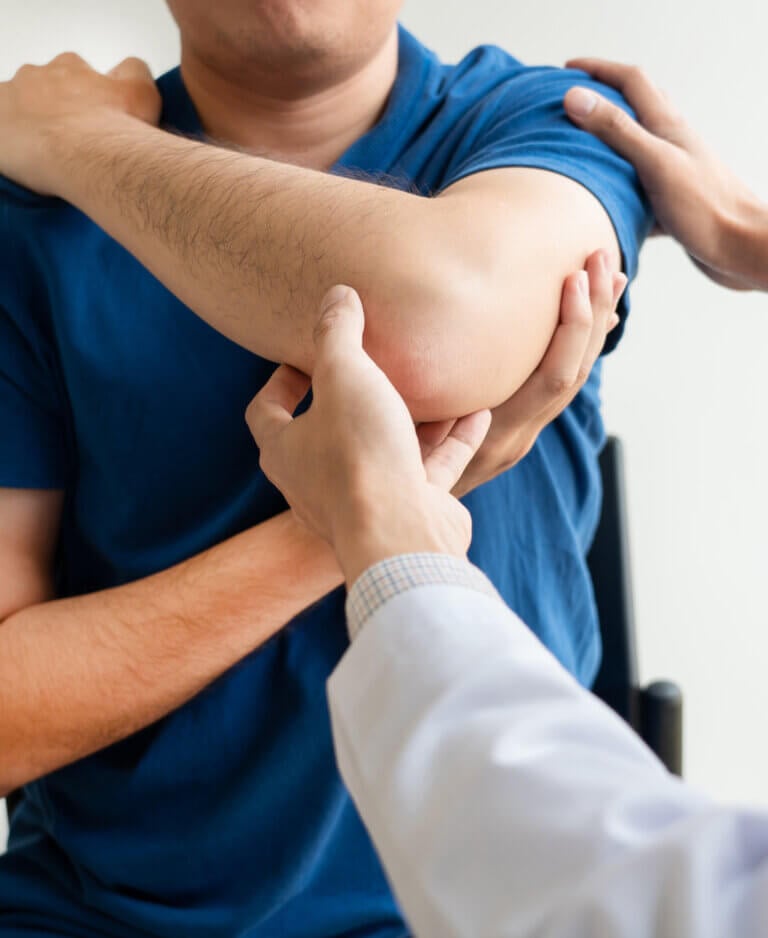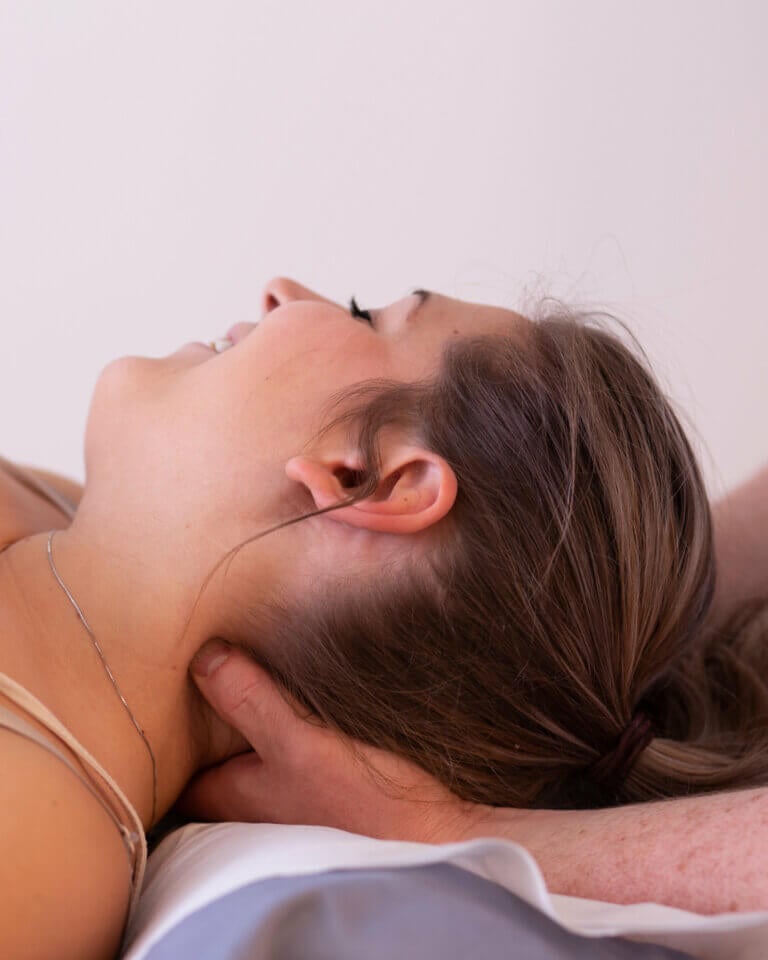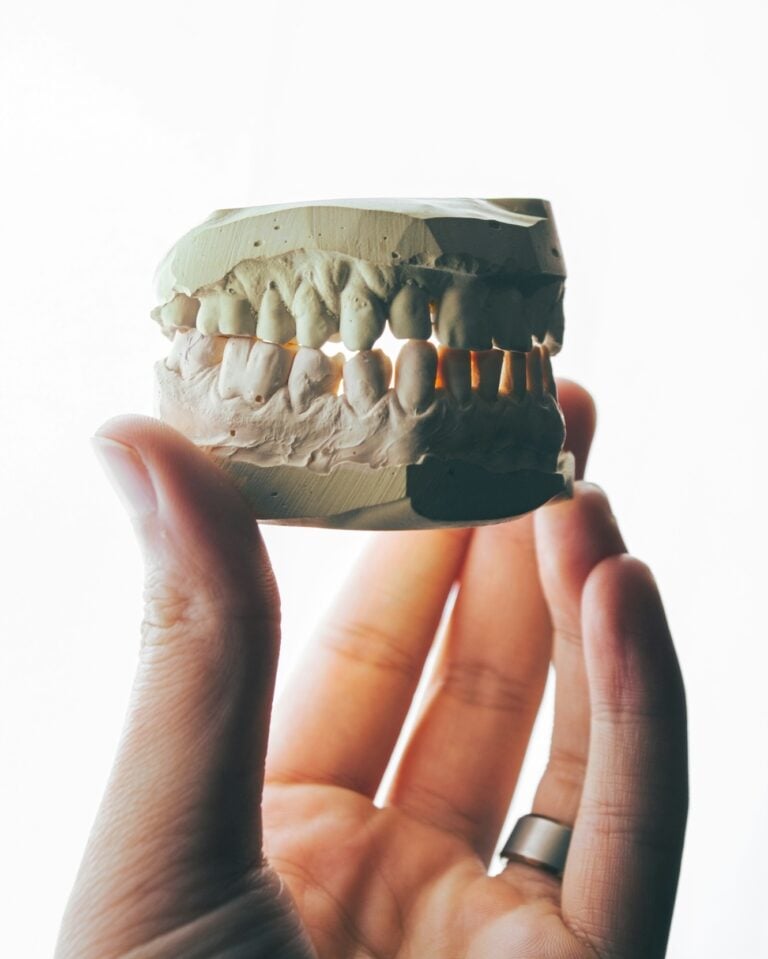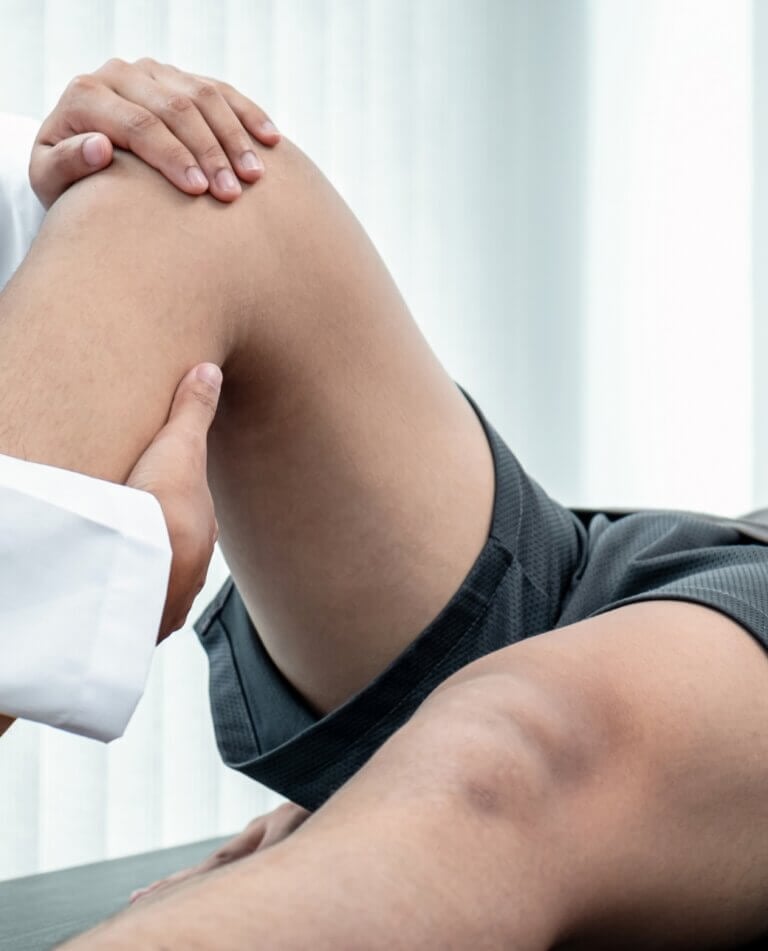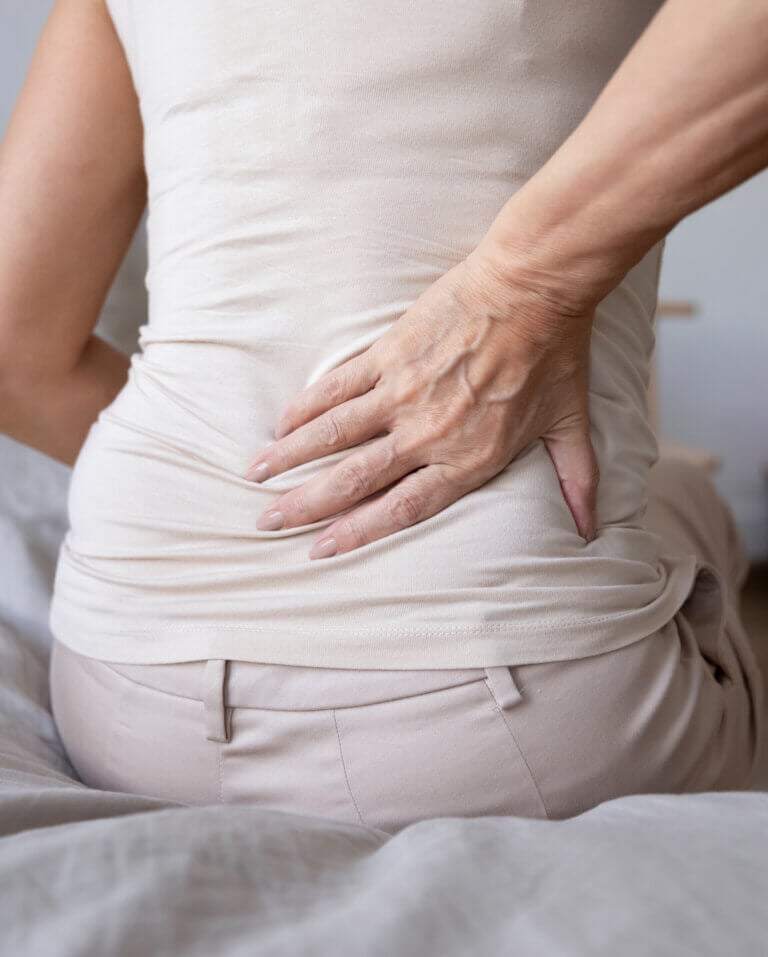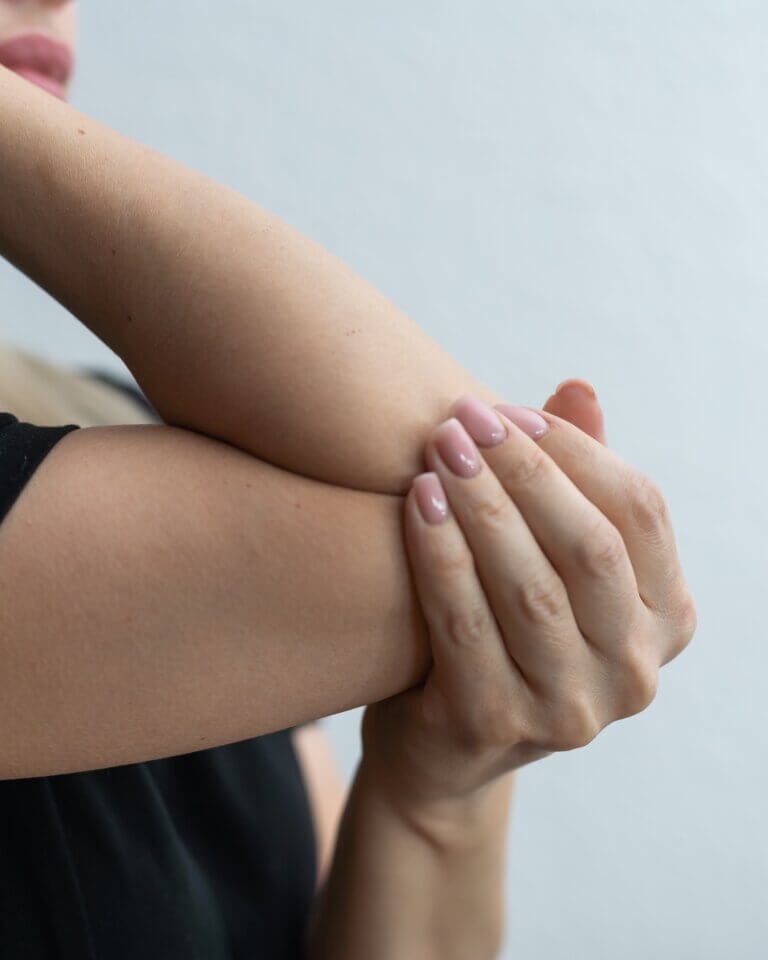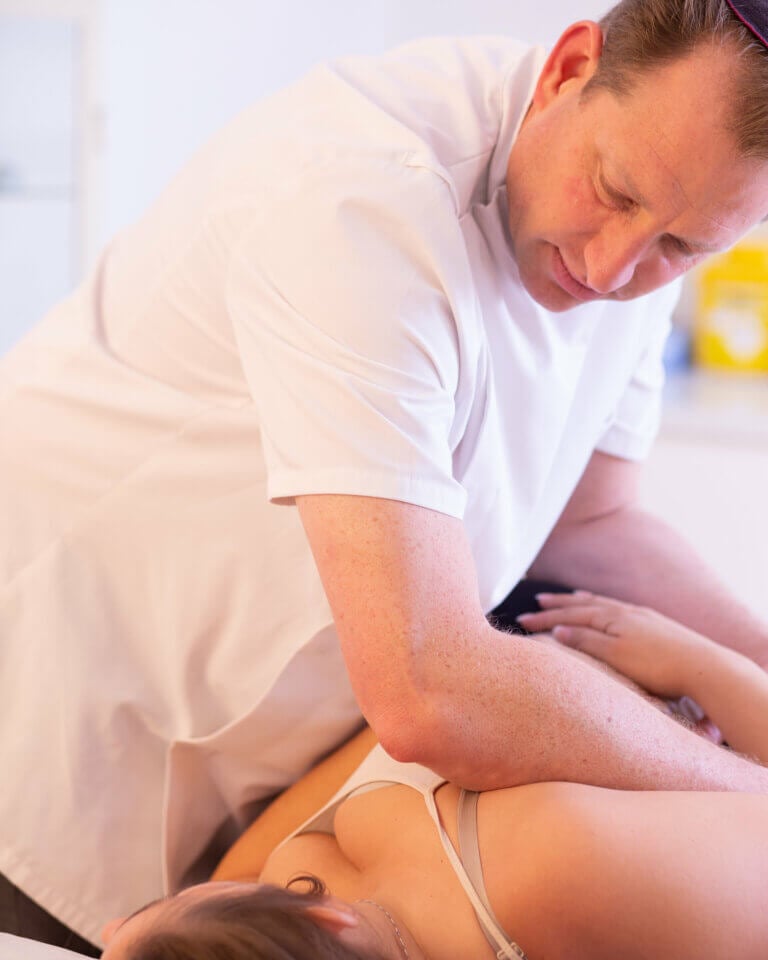One of the biggest challenges during pregnancy is pelvic pain, also known as pelvic girdle pain (PGP) or symphysis pubis dysfunction (SPD). There is increased weight during pregnancy and this bears down on the pelvic floor and along with other various physical structures. Additionally there can be stiffness in pelvic joints or the joints may be moving slightly askew. It is not unheard of for women to get sciatica, pelvic pain dysfunction, pain or discomfort during sleeping.
But… I tell patients that pregnancy is physiological but not pathological! In other words, it is not something to worry about even though it can be uncomfortable. The physiology of pregnancy means that there is increased weight and increased pressure on different parts of the body, but there are things that we can do to decrease pressure on your back and pelvic floor. Generally this is very helpful to both the mother and the growing baby!
Osteopathic treatment is a gentle form of healing and there are many options to help regardless of what stage of pregnancy you are in or your level of mobility. During the advanced months of pregnancy we might opt for cranio-sacral healing or acupuncture.
My experience in women’s health is mainly to help with pain during pregnancy although there are also ways that osteopathy can help with fertility if you are finding it difficult getting pregnant. Many people suffer from PCOS, polycystic ovary syndrome. This affects the functions of the ovaries, leading to irregular periods, the production of too much androgen (male hormones), or enlarged ovaries. PCOS is known to run in families and whilst there is no known cure, there are ways of treating it so that you can successfully get pregnant and grow your family. The tools and techniques of osteopathy provide an excellent addition to whatever medication you have been prescribed.
